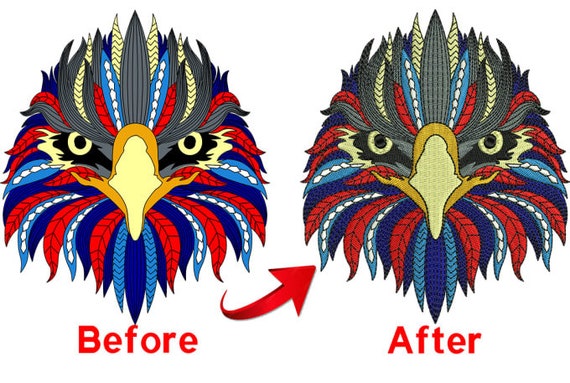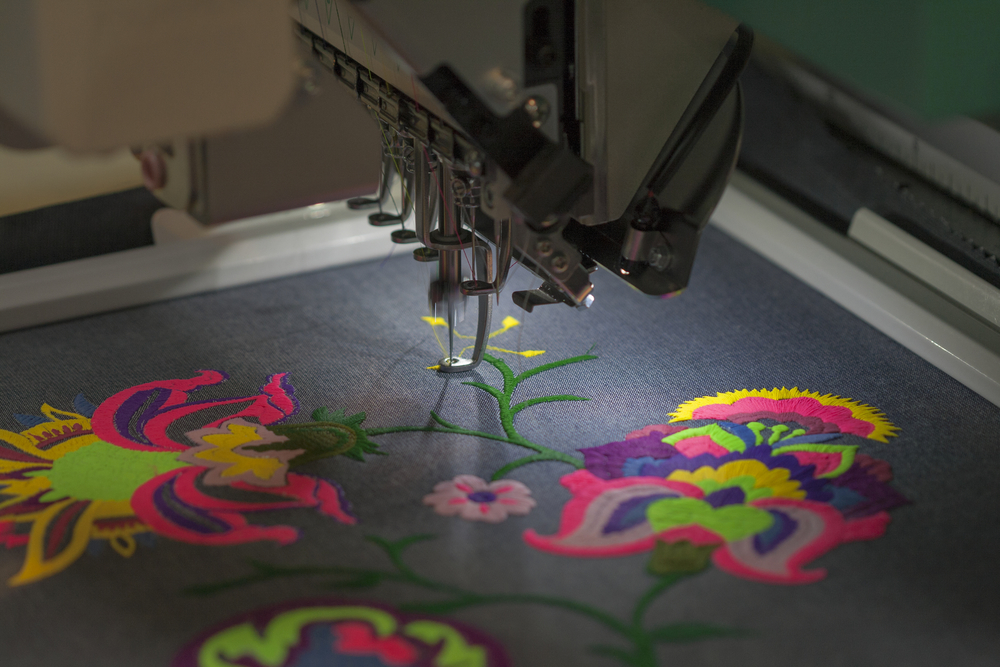Efficient Digitizing for Embroidery: Quick Turnaround
Wiki Article
Simplifying the Art of Needlework Digitizing: Step-by-Step Guide
As technology continues to breakthrough, the digitization procedure has actually become more easily accessible, enabling lovers to bring their intricate designs to life with convenience. In this guide, we will decipher the intricacies of needlework digitizing, damaging down each action systematically to streamline the procedure and equip both beginners and seasoned embroiderers alike.Recognizing Needlework Digitizing Software Application
Needlework digitizing software application works as a crucial device for changing detailed layouts right into electronic formats suitable with embroidery machines, assisting in accurate stitching and customization. This customized software enables customers to import different image file formats, such as JPG or PNG, and transform them into embroidery machine-readable styles like DST, EXP, or PES - Digitizing for Embroidery. By making use of features like stitch modifying, rug choices, and string shade option, digitizing software enables individuals to regulate every element of the style procedureFurthermore, advanced embroidery digitizing software program provides tools for developing complex styles, changing stitch density, and integrating intricate information. Individuals can also preview the design prior to stitching it out, making sure precision and minimizing errors. Additionally, lots of software application give automated attributes that aid enhance the digitizing procedure, conserving effort and time.
Comprehending the capacities of embroidery digitizing software is crucial for achieving premium cause embroidery projects. By grasping this device, embroidery fanatics and professionals can unleash their creative thinking and bring intricate styles to life with precision and performance.

Choosing the Right Style Documents
After familiarizing on your own with the capacities of embroidery digitizing software application, the following important action in the process is selecting the right layout apply for your job. Digitizing for Embroidery. When choosing a design apply for needlework digitizing, it's vital to consider the intricacy of the style, the size of the end product, and the kind of fabric you will be dealing withFor complex designs with fine details, a high-resolution photo or vector data is suggested to make certain that the needlework maker can properly recreate the layout. In addition, the dimension of the final item plays a significant role in selecting the best design data. Bigger styles might call for higher resolution documents to preserve quality and sharpness.
Moreover, the kind of material you will be stitching on influences the selection of style data. Various fabrics might call for modifications in the design file to make certain that the stitches are properly aligned and the style appears as planned. By carefully selecting the ideal style documents based on these variables, you can set yourself up for a successful needlework digitizing procedure.
Digitizing Devices and Techniques
Utilizing specialized software application and accuracy strategies, digitizing devices are important in transforming intricate layouts right into embroidery-ready data. Needlework digitizing software application, such as Wilcom, Hatch, or Embrilliance, provides the needed platform to convert artwork into stitch data. These programs offer features like stitch editing, underlay alternatives, and text tools to make certain the layout converts perfectly onto fabric.Among the key techniques in digitizing is creating a clear path for the embroidery device to adhere to. This includes digitizing each aspect great post to read of the design with precision, identifying stitch types, densities, and directions. By using devices like digitizing tablet computers or software-specific plugins, embroiderers can attain a high level of precision in their digitized styles.
Moreover, grasping the art of padding sewing is crucial for generating quality embroidery. Underlay stitching stabilizes the textile and creates a foundation for the design, making sure that the end product is both visually appealing and durable. By recognizing these digitizing tools and techniques, embroiderers can raise their craft and bring intricate layouts to life with precision and efficiency.
Tailoring Stitch Types and Directions
Having actually developed a structure in digitizing tools and techniques, an essential facet in advancing embroidery workmanship hinges on tailoring stitch types and instructions with precision and purpose. The choice of stitch types can substantially impact the total look and texture of the stitched layout. Satin stitches, recognized for their smooth and glossy coating, job well for producing boundaries and message. On the various other hand, fill stitches are ideal for covering larger locations successfully. By tactically integrating these stitch kinds, embroiderers can attain depth and dimension in their styles.Furthermore, the instructions of stitches plays a crucial role in boosting the aesthetic allure of the final needlework. Numerous stitch instructions can add appearance, emphasize particular elements, and develop visual rate of interest. Transforming the angle of stitches can simulate movement or natural patterns like hair or plumes. By explore different stitch angles and patterns, embroiderers can bring their designs to life with exceptional detail and complexity. Grasping the art of customizing stitch types and directions equips embroiderers to release their imagination and boost the high quality of their job.
Testing and Refining Your Digitized Design
To guarantee the accuracy and quality of your click here now digitized design, complete screening and improvement are crucial steps in the embroidery digitizing process. Once you have actually finished the digitization of your layout, it is important to evaluate it before waging the actual embroidery. Evaluating allows you to identify he said any prospective concerns such as thread breaks, sew thickness troubles, or layout distortions that might influence the outcome.
After screening, it is essential to improve your digitized layout based upon the responses from the examination sew-out. This might include tweaking stitch settings, changing thickness, or making adjustments to the total layout to accomplish the preferred result. By iterating through screening and improvement, you can adjust your digitized layout to excellence prior to moving on with the actual needlework process.
Conclusion
To conclude, grasping the art of embroidery digitizing requires a complete understanding of the software application, selecting the right layout documents, using digitizing tools and strategies, personalizing stitch types and directions, and screening and fine-tuning the digitized style. By following these actions, embroiderers can streamline the digitizing process and produce top notch embroidered styles with precision and effectiveness.Report this wiki page